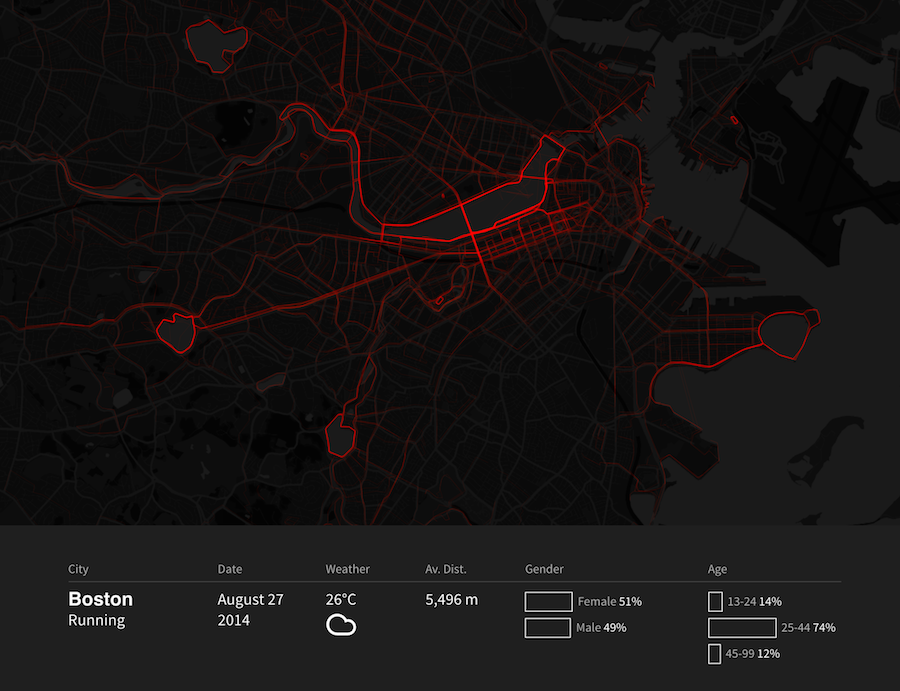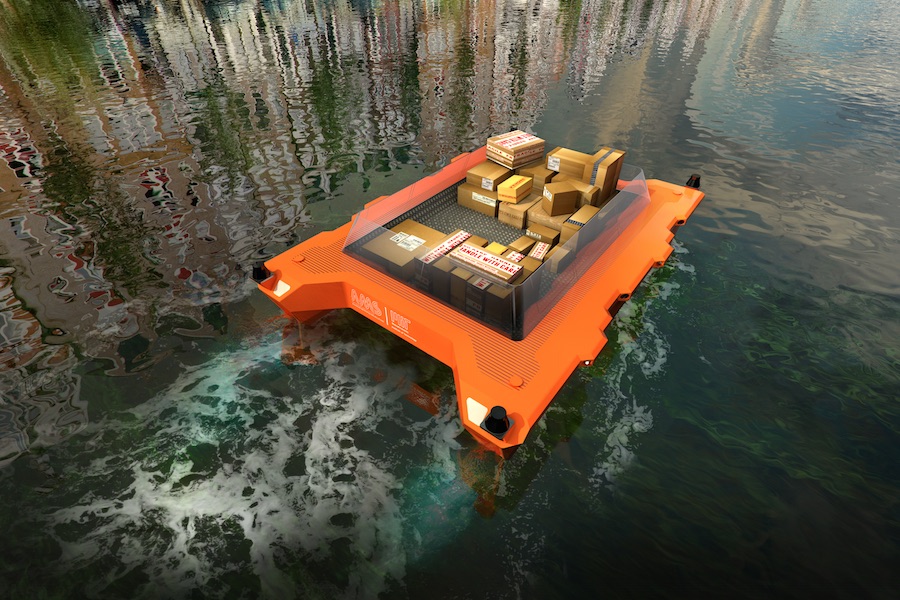Carlo Ratti is the founder of the Turin, Italy-based firm Carlo Ratti Associati (CRA) and director of MIT’s Senseable City Lab. In both roles, he explores how technology can improve the built environment and, it follows, our lives. Recently in Turin, CRA completed the Agnelli Foundation headquarters, which employs a smartphone app to let occupants set personal temperature preferences that the building translates into individualized “thermal bubbles.” Meanwhile, the Senseable City Lab has been a steady source of data and visualization projects—such as mapping walking, running, and cycling trips in Boston and San Francisco—while dabbling in related fields like robotics. AN talked to Ratti about the opportunities and risks that wired, sensing, and smart architecture will bring.
The Architect’s Newspaper: How do you feel about the term “smart cities”? It has become very loosely defined and can refer to anything from superfast fiber-optic networks to autonomous vehicles.
Carlo Ratti: To be frank, I don’t feel that great about it. As you say, “smart city” is often used in a loose way. Also, too many times it equates to top-down approaches in the implementation of urban technological solutions—à la Masdar or Songdo. Our vision is different. When we started the Senseable City Lab at MIT and our design office Carlo Ratti Associati around ten years ago, we were interested in how our cities could become more “sense-able”: able-to-sense, sensible, and perhaps even more “sensitive.” And this has remained our main focus since then.

In many cases, that “sensing” means collecting masses of data—whether it’s trees, human movement, or ride-sharing potential—to reveal new efficiencies, solutions, or patterns.
We need to go back to the very notion of design. According to Herbert Simon, “the natural sciences are concerned with how things are…design, on the other hand, is concerned with how things ‘ought to be.’” I believe that designers must challenge what exists today, introduce new and alternate possibilities, and ultimately pave the way toward a desirable future. In this process, it is vital to get people’s input, which often happens online. In our latest book (The City of Tomorrow, Yale University Press, 2016), we call this method futurecraft.
But do you think there’s a privacy risk that comes with getting people’s input—their data? Are you concerned about surveillance?
I am very concerned—but more about what is happening in our pockets than about what is happening in our cities. Most of our activities—where we go, how we get there, what we buy, to name just a few—are recorded thousands of times every day and stored somewhere in the cloud. Who controls the data? How can we avoid data monopolies? Such questions are more topical than ever.
I would rather prefer a society where value comes not from data itself, but from what intelligence can extract out of it.

That intelligence can really benefit a society. Your projects Underworlds and Urban Exposures explore the public-health benefits of technology—something that is often overlooked in this discussion.
Both projects focus on data to provide a better understanding of human health in the city—which in turn can inspire policy action. Urban Exposures, for example, combines data from air quality measurement stations and human mobility to estimate human exposure to pollutants in a more accurate way.
Currently, it seems European cities are ahead of American cities when it comes to using technology for the public good.
It’s hard to generalize. Europe is very heterogeneous—Copenhagen or Stockholm are very different than, say, Valencia or Athens. What I often notice in the U.S. is a bias against government spending in public infrastructure—perhaps a soft version of “The Plot Against Trains” described by Adam Gopnik in The New Yorker. At the same time, we will find out soon how the trillion-dollar plan by President Trump on U.S. infrastructure will be spent—hopefully not just on walls…
On that topic, new technologies are creating huge opportunity to change—and profit from—how we move within existing infrastructure. As carmakers and ride-sharing companies race to capture that market, would you like to speculate on what “mobility” will look like in 20, even 50, years?
Autonomous vehicles promise to have a dramatic impact on urban life, blurring the distinction between private and public modes of transportation. “Your” car could give you a lift to work in the morning and then, rather than sitting idle in a parking lot, give a lift to someone else in your family—or, for that matter, to anyone. As a result, a single vehicle can go from one-hour usage per day to 24 hours. Under such conditions—and increased sharing of rides—we have calculated that the mobility demand of a city could be met with just a fraction of today’s vehicles.
There could also be dystopian scenarios, however. Car transportation could become so cheap that it might drain customers from subways and buses, turning our streets into an instantaneous gridlock. The impact of autonomous vehicles will depend on the policy decisions we make. I agree with my friend Robin Chase, founder of Zipcar, when she says that “simply eliminating the drivers from cars, and keeping everything else about our system the same, will be a disaster.”

Beyond urban infrastructure, your firm is focusing on infrastructure at the building scale—interior climate systems specifically. This goes all the way back to a 2011 paper you helped author, but most recently it was the focus of your app-driven design for the Agnelli Foundation headquarters. Why this interest in temperature, occupancy, light, and energy usage?
The 2011 paper shows that a staggering amount of energy is wasted on heating empty offices, homes, and partially occupied buildings. That finding prompted a series of projects where we tried to better synchronize human presence and climate control. The Agnelli Foundation, which opened just a few months ago, is the first application of such ideas at the architectural scale. We equipped a historical office building with digital sensors that monitor variables such as temperature, lighting levels, and matched this data with occupancy information.
When a person gets into a building and sets her preferences in term of temperature or lighting, the building-management system recognizes her and automatically responds by activating the system accordingly. It generates something like a “thermal bubble,” following a person within the building as she moves across the various rooms and corridors. The final outcome is better comfort for users as well as a substantial reduction in energy consumptions—estimated up to 40 percent. When all occupants leave, the room returns naturally to “standby mode” and saves energy, much as a computer would do.
We imagine that more and more buildings will be equipped with sensor networks—making architecture increasingly able to “sense and respond.” By designing climates, we might get closer to the vision of architecture as a third skin—an endlessly reconfigurable space able to adapt to human needs.
